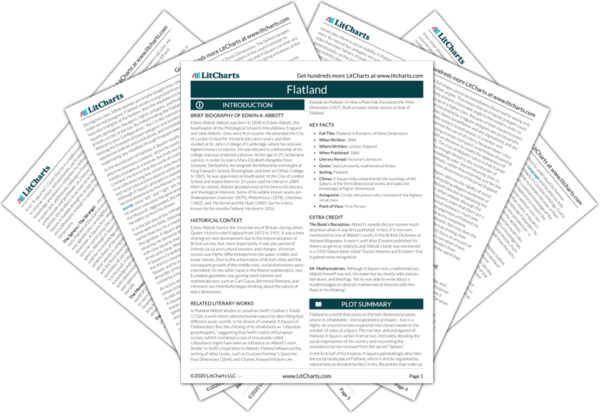Also mentioned as language. Throughout the book, the characters who are teaching their respective pupils, such as the Sphere with A Square and A Square with the Monarch of Lineland, find it difficult to convey the concept of a higher dimension using only words. In that sense, words symbolize the limits of understanding abstract knowledge, like that of extra dimensions or of divinity itself. Therefore, eventually, these “teachers” resort to using deeds and action in order to persuade their students. A Square physically moves in and out of the line that the Monarch believes is his entire world. The Sphere also moves in and out of Flatland. He even physically pulls A Square out into Spaceland.
What should be made clear is Abbott’s intention in pointing out the insufficiency of words. After all, his own work predominately relies on words—literally—and it depends on the function of language and rhetoric to convey his satire of Victorian Britain. Thus, it must seem almost contradictory and self-defeating to suggest the deficiency of words. But, consider the purpose of both Abbott and A Square in writing Flatland, which is to incite their readers to adopt a spirit of rebellion against oppression and to seek higher knowledge. Both are specifically interested in inspiring action, and not simply educating their readers. Therefore, it may be more helpful to view the limitation of words not as a way of undervaluing their function, but highlighting that they may not be enough to effect change. In the same way that Flatland and A Square’s own treatise include diagrams and illustrations to communicate their message, the authors and readers alike must take an active role beyond writing in noticing and resisting oppression.
Words Quotes in Flatland
It was not so clear as I could have wished; but I remembered that it must be “Upward, and yet not Northward,” and I determined steadfastly to retain these words as the clue which, if firmly grasped, could not fail to guide me to the solution.

Unlock explanations and citation info for this and every other Flatland quote.
Plus so much more...
Get LitCharts A+









